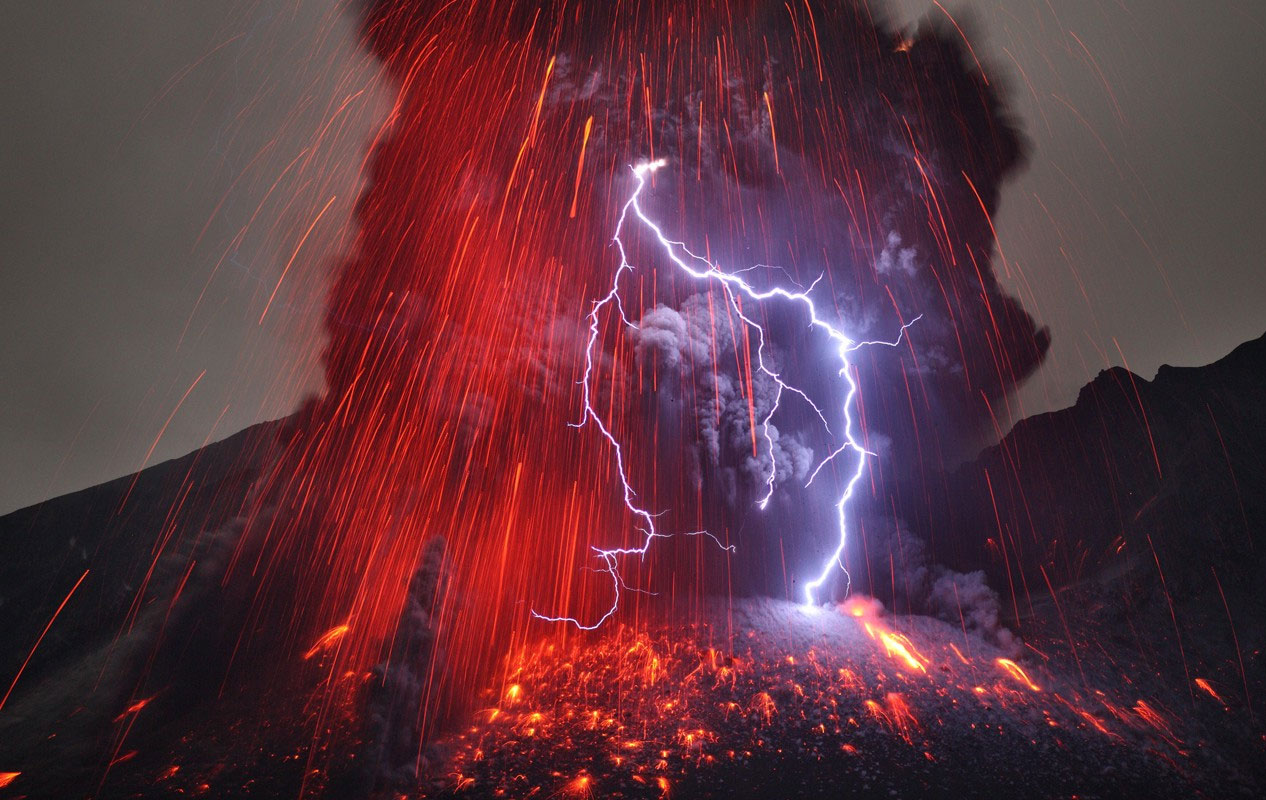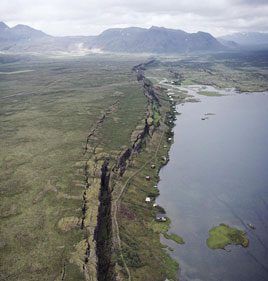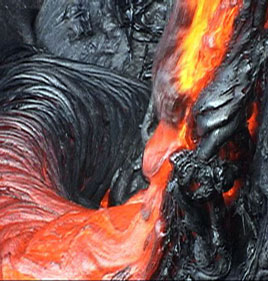 What
is Volcanic Lightning?
What
is Volcanic Lightning?
Volcanic
Lightning is exactly what is sounds like, lightning
that forms due to volcanic activity. So, how exactly
does it form?
The basic key
component to creating lightning is a separation in
charge that is large enough to circumvent air
resistance. Effectively the ash that is spewed out
during an eruption becomes electrostatically
charged. It's similar to how rubbing a balloon on
your head creates a static charge. Except in this
case it just happens to be an ash cloud.
 Conservation of Energy
Conservation of Energy
Conservation
of Energy in Physics is the principle that energy
can not be created or destroyed. This fundamental
concept means that in the case of volcanic lightning
that the volcano is not creating energy during the
eruption, it's simply being transferred.
In the
case of the ash cloud, the particles start out
neutral and become charged through collusion, which
causes some particles to retain a positive charge
and some particles to retain a negative charge.
This
separation of these particles causes what we refer
to as a static charge. When that static charge
becomes large enough, electrons will over come air
resistance and the electrons will flow, this
phenomenon is what we call lightning.
In the case of
volcanic lightning, a large part of this is caused
by the process of the eruption causes particles to
collide and change charges. Much like the balloon
example mentioned above.




 What
is Volcanic Lightning?
What
is Volcanic Lightning?
